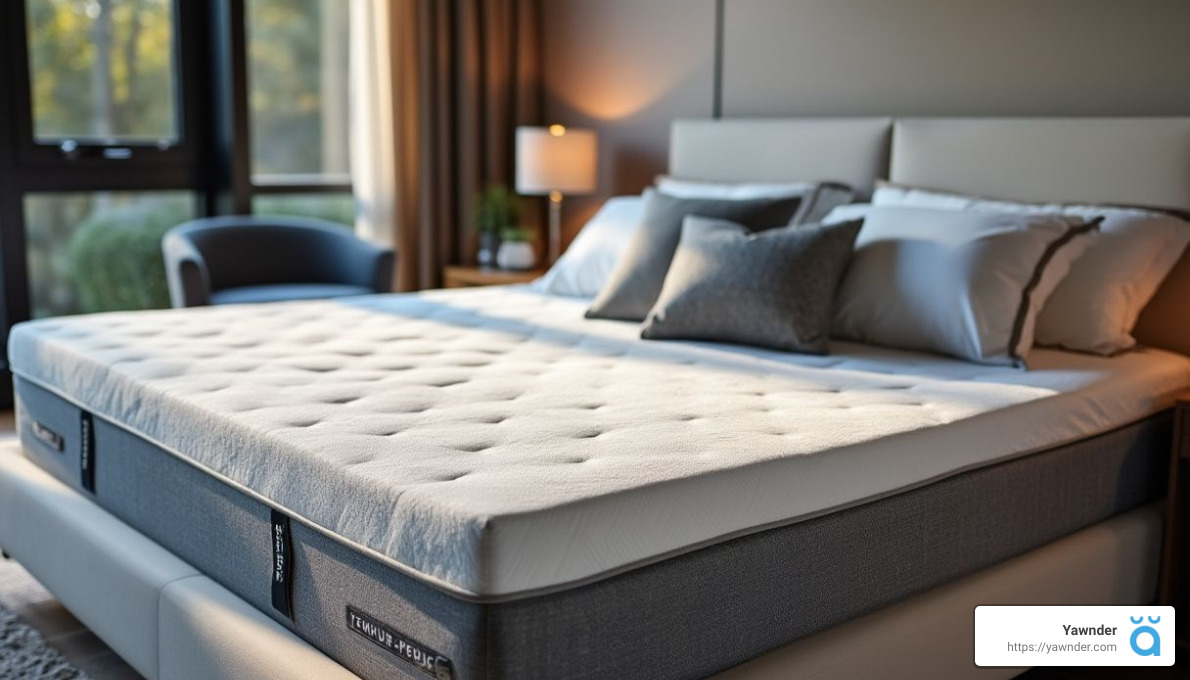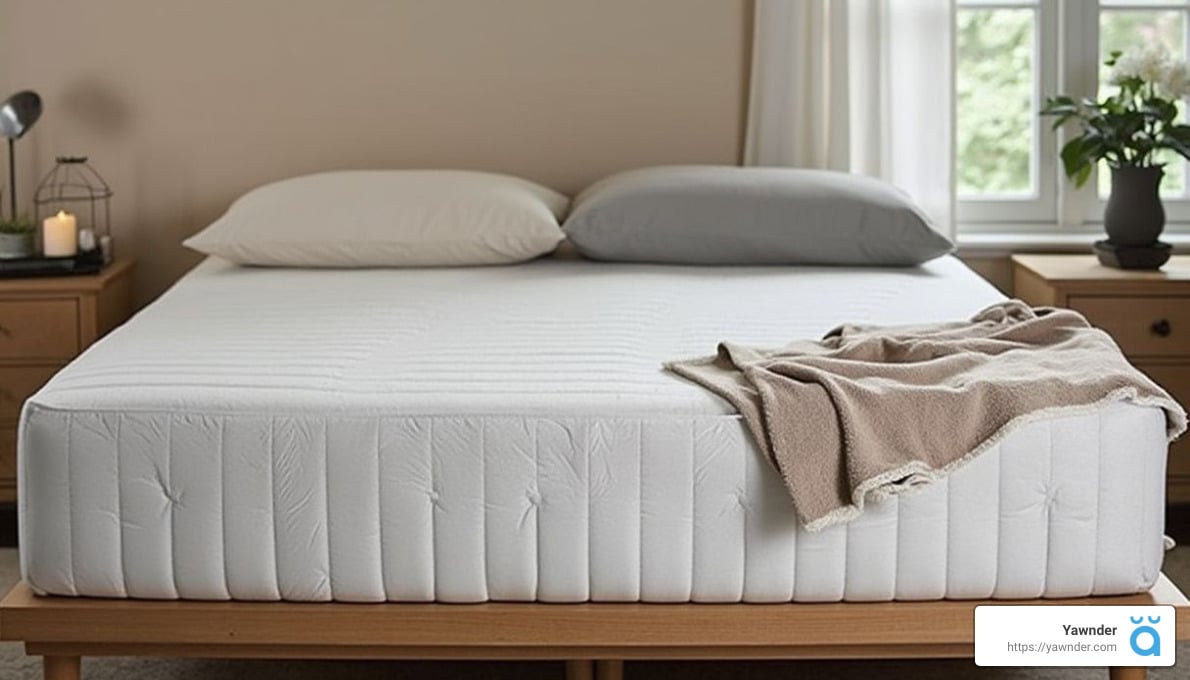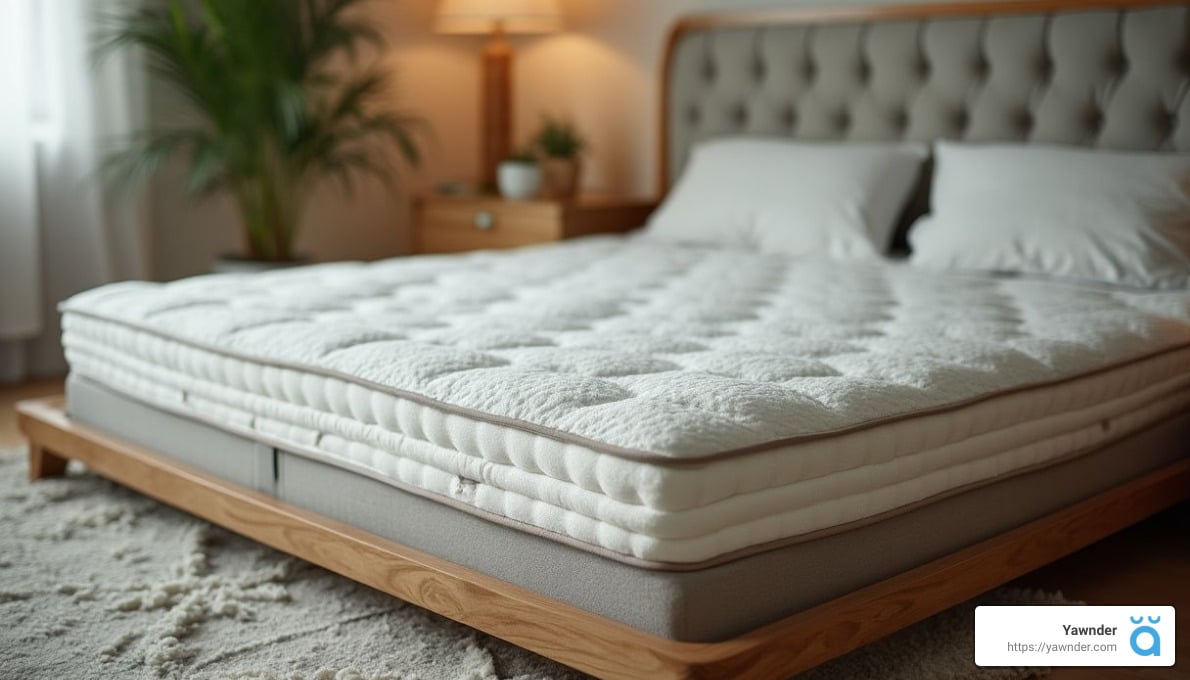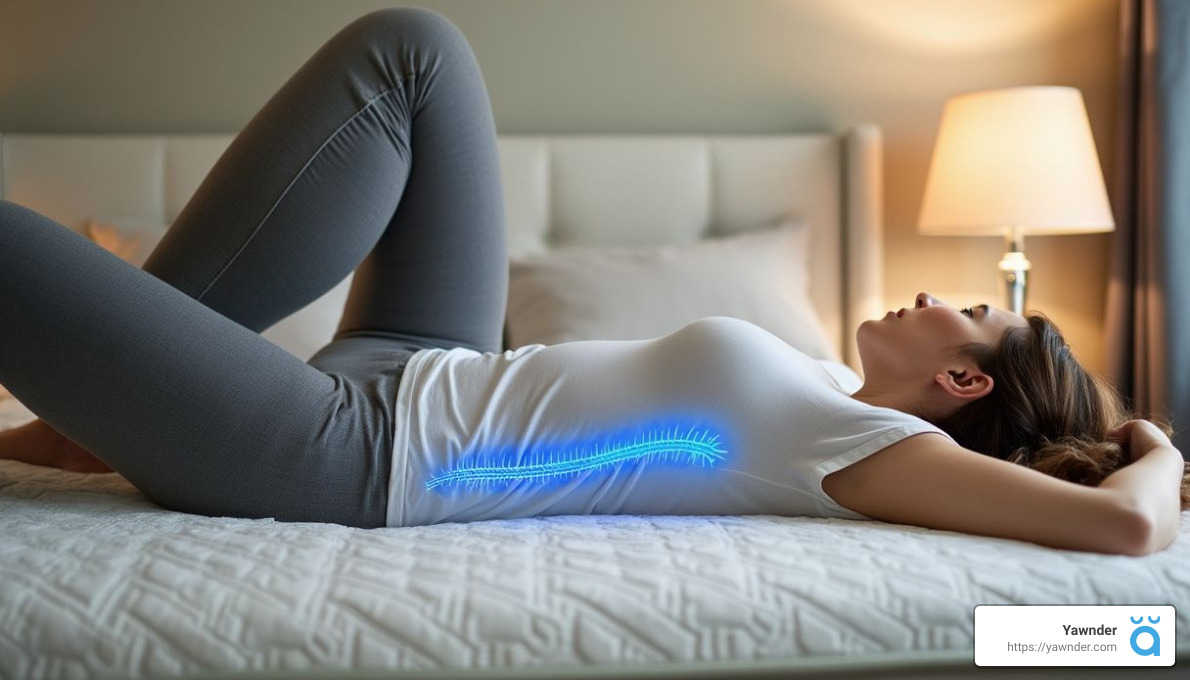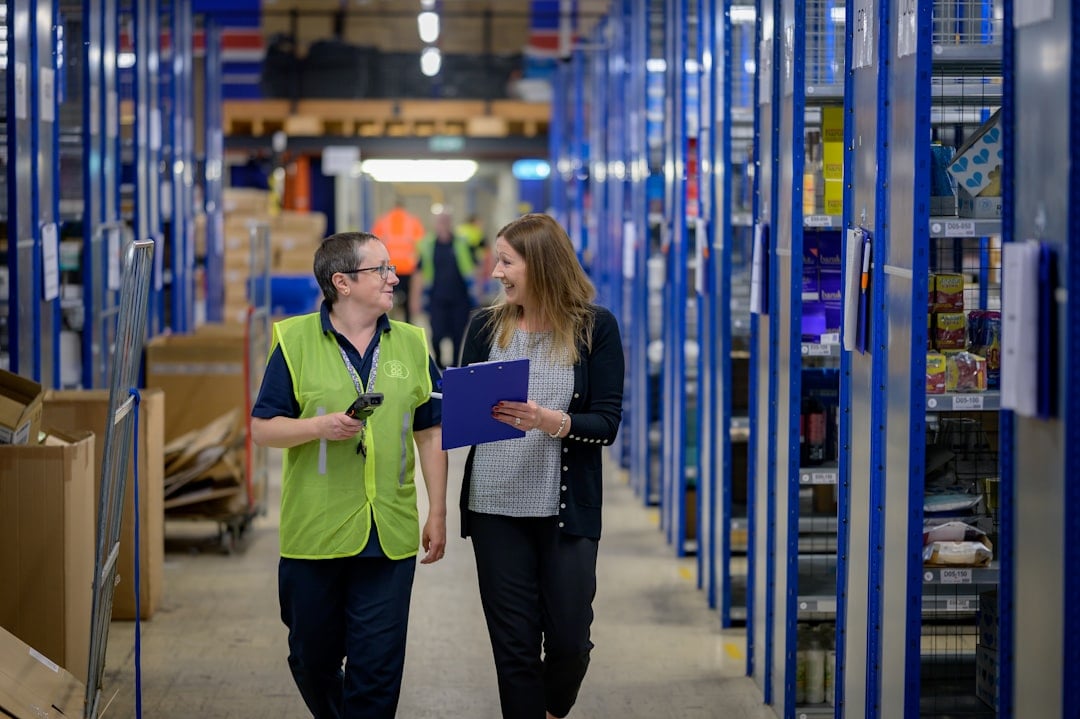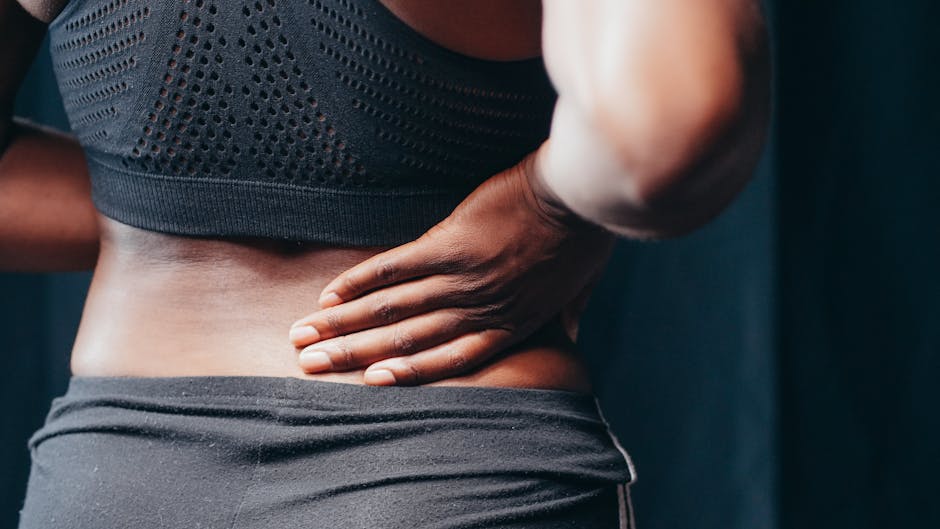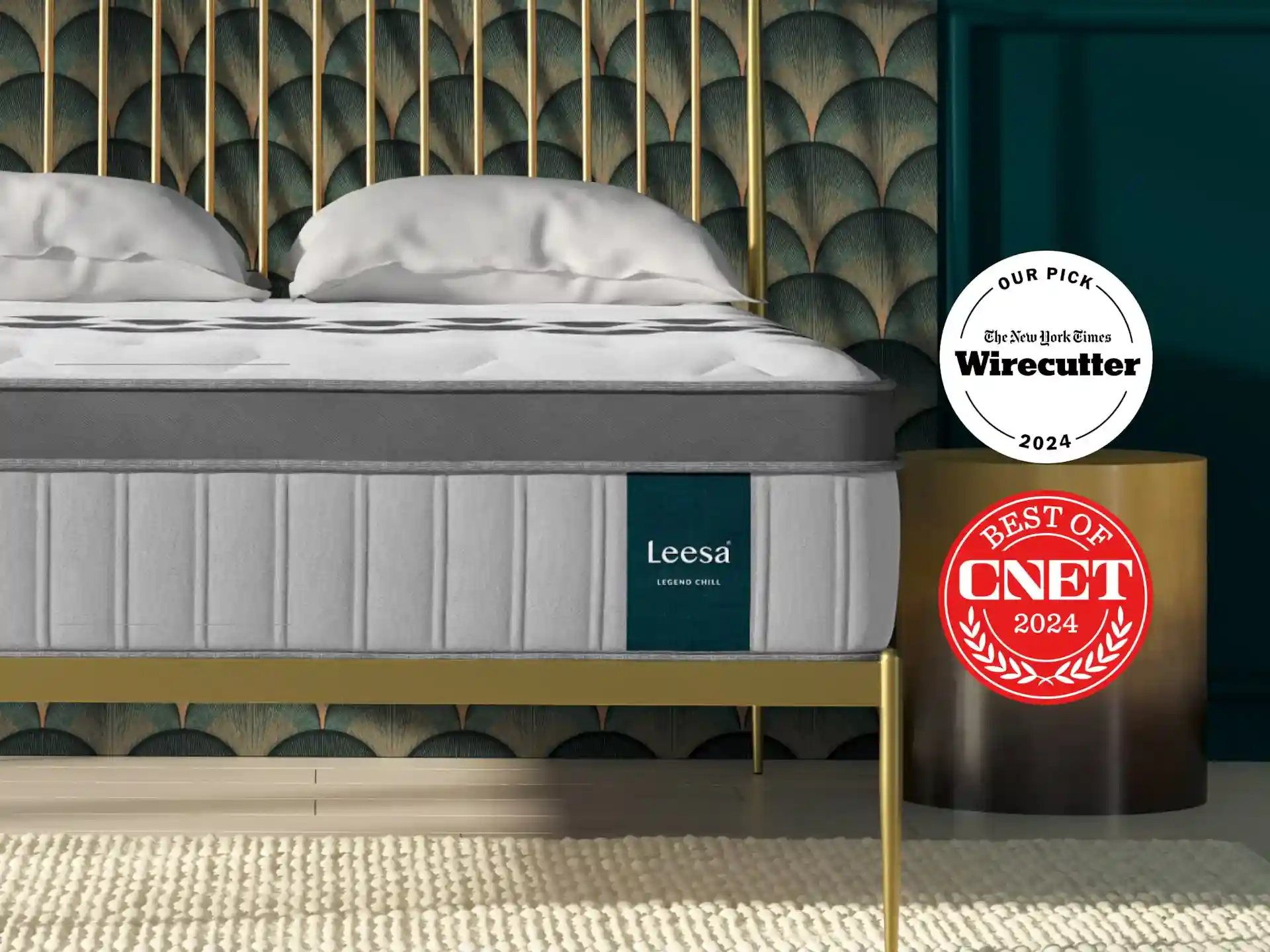Benefits of A Budget Mattress
Budget mattresses often get a bad rap, but they can actually be a great option for many people. Here are some of the benefits of buying a budget mattress:
- Affordability: The most obvious benefit of a budget mattress is its price. Mattresses can range in price from a few hundred dollars to several thousand dollars, so a budget mattress can save you a significant amount of money.
- Affordability: The most obvious benefit of a budget mattress is its price. Mattresses can range in price from a few hundred dollars to several thousand dollars, so a budget mattress can save you a significant amount of money.
- th so many budget-friendly mattress brands and retailers on the market, you’re sure to find one that fits your needs and preferences. You can choose from different materials, firmness levels, and sizes to find the perfect mattress for you.
- Convenience: Many budget mattresses can be ordered online and shipped directly to your door, which saves you the hassle of visiting a mattress store in person. Some online retailers also offer trial periods, so you can try out the mattress in the comfort of your own home before you commit to buying it.
- Surprisingly good quality: Not all budget mattresses are created equal, but there are some naprawdę high-quality options available at affordable prices. With a little research, you can find a mattress that provides good support and comfort without breaking the bank.
- Durability: While some budget mattresses may not last as long as their more expensive counterparts, many are still made with durable materials that can last for several years. If you take care of your mattress, it should provide you with good sleep for many years to come.
Of course, there are also some potential drawbacks to consider when buying a budget mattress. For example, you may not get the same level of support and comfort as you would with a more expensive mattress. Additionally, some budget mattresses may not be as durable as their more expensive counterparts. However, if you are on a tight budget or simply looking for a basic mattress that will provide you with a good night’s sleep, a budget mattress can be a great option.
Here are some tips for choosing a budget mattress:
- Do your research: Read reviews of different budget mattresses before you make a purchase.
- Consider your needs: Think about what is important to you in a mattress, such as firmness, support, and cooling features.
- Compare prices: Shop around to find the best deal on a budget mattress.
- Take advantage of trial periods: If possible, try out the mattress before you buy it to make sure it’s right for you.
With a little effort, you can find a budget mattress that meets your needs and provides you with a good night’s sleep.
Specifications
- Custom blend 3-inch cooling foam
- 2-inch supportive perforated foam layer
- 7-inch base foam
- 4 lbs. base for extra durability
- Fireproof and 100% cotton zippered cover
- Tier-1 450GSM+ fiber quality cover
- Available in 7 standard sizes
- 18-month risk-free trial
- Lifetime warranty covering body impressions
- Easy return policy with the full cost borne by the company
Zinus Green Tea

|
Pros |
Cons |
| Great price point |
Shows signs of wear and tear quickly |
|
Highly durable |
Made in China |
|
Green tea infused for extra freshness |
Specifications
- Made of memory foam infused with green tea, comfort foam, and base foam layers
- Available in 6 inches, 8 inches, 10 inches, and 12 inches thickness
- Comes in 7 standard sizes
- Moisture absorbing active charcoal-infused pressure-relieving foam layer
- Body temperature regulation
- Ideal for all sleepers
- Medium to medium-firm
- CertiPUR US certified
- Shipped in a compressed state
- Twin mattress size supports 250 lbs., and all other sizes support up to 500 lbs.
- 100 nights trial period
- Ten years limited warranty
Cocoon by Sealy Mattress
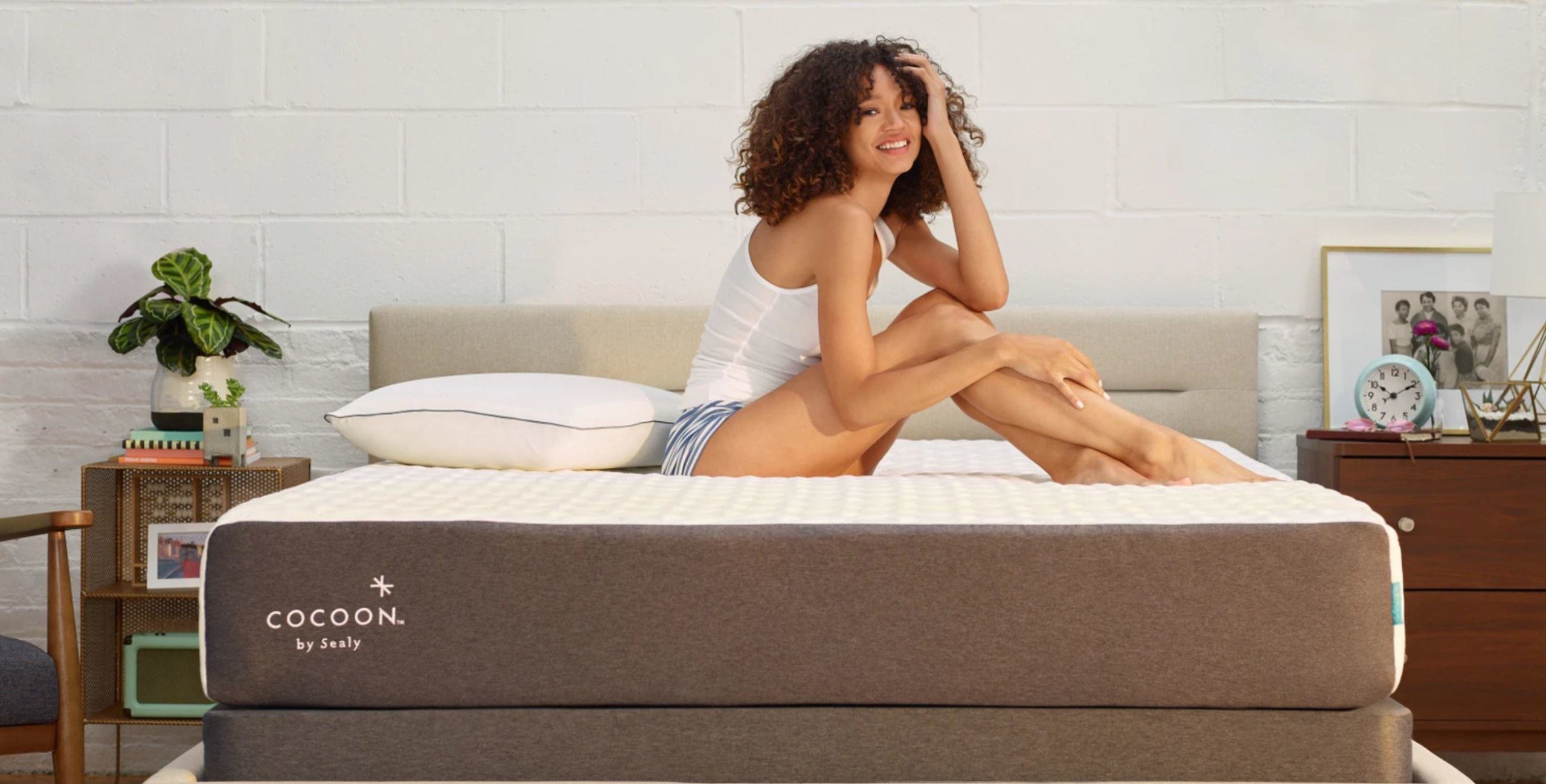
|
Pros |
Cons |
| Can choose your preferred firmness level |
High price point |
|
Features proprietary phase charge material for optimal temperature regulation |
|
|
Easy finance options |
Specifications
- Comprises of cooling cover, perfect fit memory foam, responsive comfort foam, and support layer at the bottom
- Cooling cover sports proprietary phase change material
- Available in 6 sizes
- Comes in 10 inches for a memory foam mattress and 12 inches for a hybrid mattress
- Ideal for all sleepers, especially side sleepers and hot sleepers
- Designed and manufactured in the USA
- Free returns within the USA
- CertiPUR US certified
- 100 nights trial period
- Ten years limited warranty
OkiOki Mattress
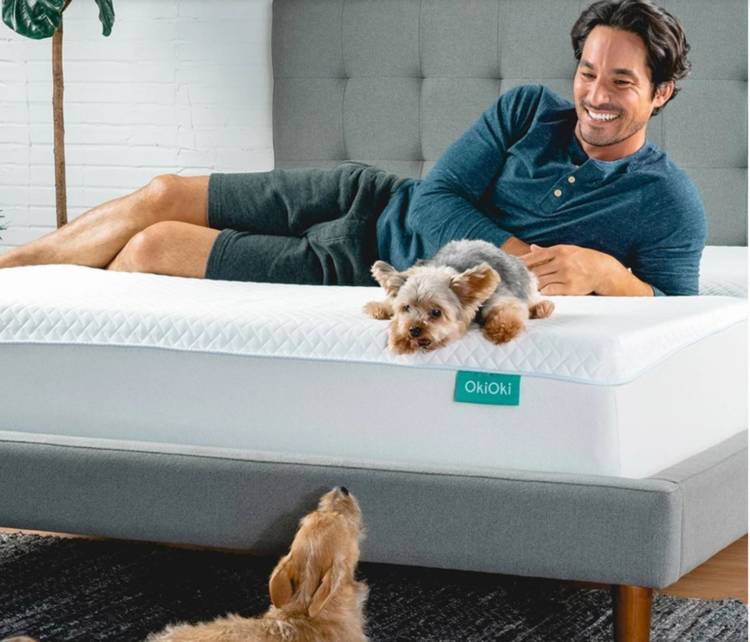
|
Pros |
Cons |
|
Good value for money |
Not manufactured in the USA |
|
Four firmness levels to choose from |
|
|
Both CertiPUR-US and OEKO-TEX certified |
- OkiSoft: This is great for side sleepers and gives you the perfect “sink-in” feel. It has a 3-inch comfort foam layer that just screams plush comfort.
- OkiEasy: It is a little bit firmer with a great recovery rate. It is ideal for back sleepers. The coil in foam allows it a good bounce and great versatility. However, the bounce also makes it least impressive with motion transfer control.
- OkiFlex: This mattress is a hybrid mattress with both coils and springs. The coils are well encased within the foam, so you do not have to worry about getting poked anytime during the mattress lifetime. The motion transfer is well absorbed by the coil-encased foam and the thick top layer, so you do not feel jittery on the mattress. This option is great for side sleepers, but it does not offer good pressure relief since it is a bit on the firmer side.
- OkiFirm: If you are looking for a firm mattress, then OkiFirm is the one for you. The construction is similar to OkiSoft but with denser memory foam to give it extra firmness. There is no motion transfer making this ideal for stomach sleepers.
Specifications
- Comes in 4 levels of firmness
- Available in 6 sizes
- Features high porosity gel memory foam
- Ice yarn zip cover maintains and regulated body temperature
- Supports up to 600 lbs
- CertiPur US and OEKO-TEX certified
- Ships within 1 – 2 days after order placement
- Returned mattresses are either recycled or donated to a local charity
- 365 days free nights trial
- Ten years limited warranty
Brooklyn Bedding Signature Mattress
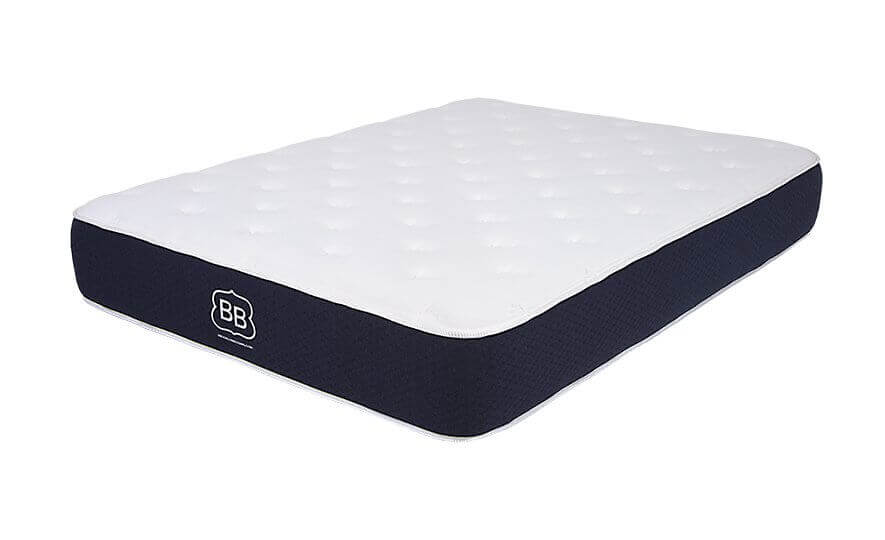
|
Pros |
Cons |
| Soft and plush top layer |
Pronounced motion transfer |
|
Minimal off-gassing issue |
|
|
Good price point |
Specifications
- TitaniumGel infused 2-inch TitanFlex comfort layer
- 6 inches 961 ascensions pocketed coils
- 2-inch TitanFlex supportive layer
- Available in 14 sizes with three levels of firmness
- Custom made in the USA
- 120 nights free trial
- 10-year limited warranty for 1.5 inches or more body impressions
Lucid Hybrid Mattress
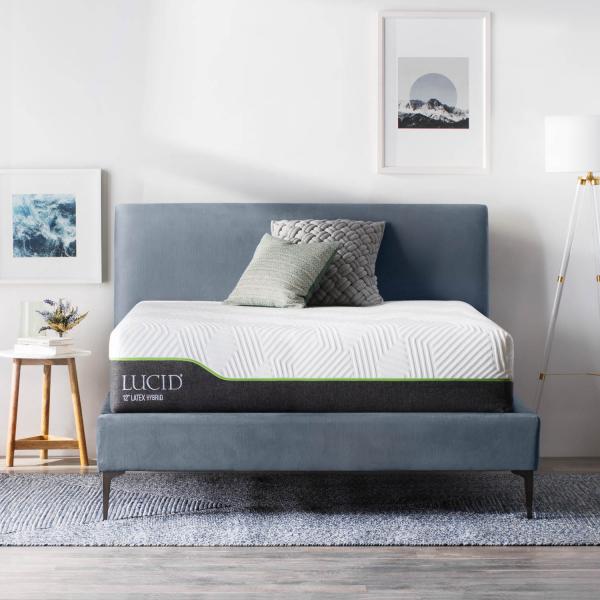
|
Pros |
Cons |
|
Charcoal and aloe vera infused foam |
Low body conformability |
|
Edge support |
|
|
Good motion transfer control |
Specifications
- Bamboo charcoal and aloe vera infused 3.5 inches or 2.5 inch top layer
- 5 inch or 5.5 inches individually foam encased steel coils
- 2-inch support frame
- 6-inch perimeter support edge foam
- Available in 6 sizes and two thickness variants
- Soft firm
- Good for back and stomach sleepers
- CertiPUR-US certified
- 100 nights free trial
- 10-year warranty
Specifications
- 5-inch copper infused memory foam
- 5-inch gel-infused slow rebound second layer
- 6-inch support base
- Soft minus technology for temperature control
- Black and white check zippered cover
- Available in 3 sizes
- CertiPUR-US and OEKO-TEX certified
- Anti-bacterial and hypoallergenic
- Company based in Honk Kong
- 120 nights free trial
- 10 year limited warranty
Specifications
- Memory foam made with plant-based “BioFoam.”
- Polyutherane base foam
- 99% polyester cover
- 15% wool panel fabric
- Available in 6 standard sizes and eight custom-designed RV sizes
- Charcoal infused memory foam
- CertiPUR-US and Greenguard Gold certified
- Optional white glove delivery
- 1 year free trial period
- 25-year warranty
Things to Look Out for In Budget Mattress
It is trickier to buy a budget mattress that is good value for money than to buy a good quality mattress with money to spare. Given the reduced price tag, you get a hit on the quality, but that does not mean you have to compromise with a poor quality product. You can easily buy a quality mattress that does well on all the important parameters. Some of the features you need to be careful about to get a good deal on a budget mattress are:Firmness Level
On average most budget mattresses give you a medium firmness level. This makes the mattress ideal for all kinds of sleepers. On a spectrum of 1 to 10, the firmness level will lie between the 4 to 6 range. A mattress with a firmness level on either end of the spectrum is not a great idea and will generally exhibit low durability and comfort issues.Motion Transfer
One of the common problems with budget mattress buys is the poor motion isolation. While you might want a coil or spring mattress over a foam mattress for the added bounce, these mattresses will not provide good motion isolation. To cut costs, most brands tend to use cheaper coils and springs in their construction that are not properly encased within the foam resulting in sagging sides and middle and poking springs. You should opt for foam mattresses, especially if you are looking for lasting durability, or jack up your budget a bit and buy a slightly higher-priced motion isolating coil or spring mattress.Pressure Point Relief
A good mattress is one that provides adequate body support and relieves your pressure points. This is an essential feature of any mattress. For this, you should look for a mattress that is constructed in layers. A foam mattress is once again the best choice since the layers help support your body by conforming to your body shape, thereby relieving any pressure on the hips, joints, and shoulders.Edge Bearing
Most mattresses tend to start showing signs of wear and tear on the edges very quickly, with stitching coming apart and side sagging. You should opt for coil base mattresses, or foam encased mattresses for better edge support than your regular all-foam mattress. Also, look for double stitching on the sides for added durability.Body and Spine Alignment
For proper body and spine alignment, you need a mattress with a good support layer and high-pressure relief. Spinal alignment with body structure is very important for all types of sleepers, especially stomach sleepers. For this, you should look for hybrid mattresses with denser supportive foam layers and coils on the lower construction for good bounce and comfort.Temperature Regulation
Nobody likes waking you hot and sweaty. The common problem with budget mattresses is their lack of temperature regulation. Most brands skip the cooling gel infusion and the top cover that helps in keeping your body cool. Look for mattresses that offer gel-infused foam, phase changing technology, layers with perforated holes for ventilation to aid in temperature regulation.Environment Friendly and Toxic Free
You do not want a mattress that comes loaded with toxic materials. With cheaper versions, you have sub-standard materials. These types of foam and coils contain chemicals like HCI, petroleum-based compounds, volatile gaseous substances, and other chemicals that are hazardous to your health. Always buy mattresses that are CertiPUR-US and OEKO-TEX certified.Warranty
Most mattresses come with 7 to 10 years of limited warranty. Some even come with a lifetime warranty. Look for a mattress that follows this norm. This means that the brand has faith in the product.Best Place to Buy Cheap Mattresses
The best way for manufacturers to cut costs is by selling directly to consumers. This way they save a lot on shops. Another advantage of selling directly to the consumer is that they skip the retailers altogether, giving you a better price since it does not factor in the profits and commission of the retailer. Apart from this, when you shop directly from the manufacturer, you get amazing discounts as well. Bottom line is that if you want the same quality at a lower price, try shopping online from the manufacturer sites. You can also try third-party sites like Amazon for great deals. Is It Better to Buy an Expensive Mattress Instead? Buying a cheaper mattress does come with its set of problems that may not seem like a good trade-off for the dollars you save. Some of the common problems with cheaper options include:- Pressure point aches and pains
- Higher risk of developing chronic body ache problems
- Poor spinal alignment
- Lower backache
- Joints, knee, and hip pain
What do You get with the Budget Buys?
When you are looking for cheaper options in the market, there are certain standard features you can expect from certain price ranges. It is always helpful to know exactly what you can expect from a mattress in a particular price segment. These are listed below:Less Than $1000 Range
For the under $1000 range, you will get more options than you bargained for. This is especially true for online shopping. You will be amazed at how you can get the same quality online for under $1000 that you would get for double that price at a physical store. Some features to expect in this range are:- High quality denser foam options
- Hybrid mattresses with foam and springs
- Optimal motion isolation
- Good body support
- Plush comfort levels
- Firmness level choices
- Temperature regulation with gel-infused foams and other fancier elements like charcoal, green tea, or aloe vera infusions
- Good sleep trial and warranty terms
Less Than $500 Range
You will get some very good options in the under $500 range. You will, however, need to compromise on certain luxurious features and the premium range. In this range, your best bet is all-foam mattresses if you do not want to skimp on quality. The durability will be less, but overall it is quite workable. Some features to expect in this range are:- Mostly foam mattress choices
- Lower durability
- Poor edge support
- Lower-grade foam but still conforming to the standards and certifications
- Fair motion isolation, especially if you opt for the foam mattresses
- Average temperature regulation



